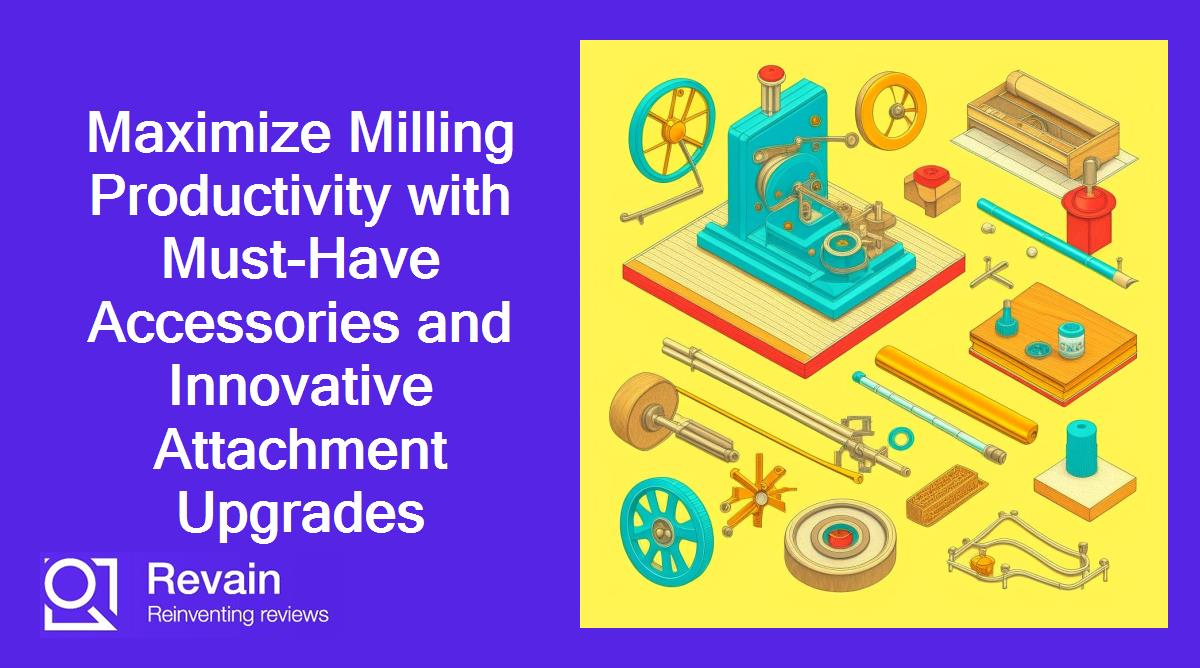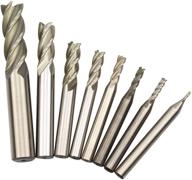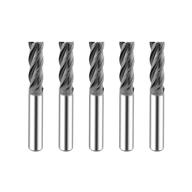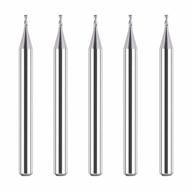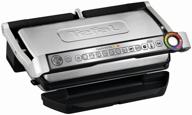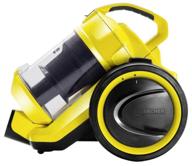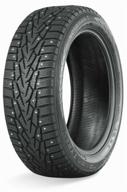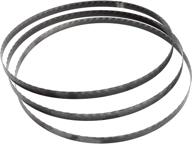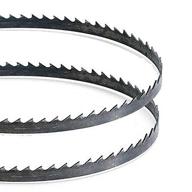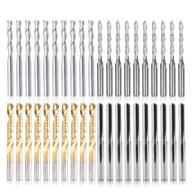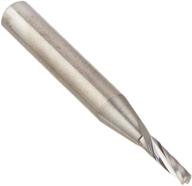Top products in 🔧 Milling Accessories
Introduction to Milling Accessories
Milling is a machining process that uses rotary cutters to remove material from a workpiece and produce parts with high precision and complex shapes. Milling accessories are attachments and tools used to enhance and expand the applications of milling machines. This article provides an overview of common milling accessories, their functions and benefits.
Common Milling Accessories
- Milling Cutters
- End mills - used for slotting, grooving, edge trimming
- Ball end mills - used for contouring and profiling with curvilinear shapes
- Face mills - for surfacing and facing large flat areas
- Tool Holders
- Arbors - to hold and secure milling cutters
- Collets - for holding small shank tools
- Chucks - for holding large cutting tools
- Workholding Devices
- Vises - hold workpieces in place during milling
- Clamps - grip irregular shaped workpieces
- Rotary tables - allow milling at various angles
- Coolants and Lubricants
- Coolants - remove heat and improve tool life
- Lubricants - reduce friction and enhance finish
Benefits of Milling Accessories
Milling accessories provide the following advantages:
- Increase capabilities - Allow more complex operations like contouring, angled cuts etc.
- Improve accuracy and precision - Components like vises and rotary tables provide stability.
- Enhance efficiency - Quick tool changes, reduced friction improves productivity.
- Extend tool life - Proper lubrication and cooling prevents wear.
- Improve surface finish - Reduced vibration and chatter creates smooth surface texture.
- Operator safety - Guards and shields prevent exposure to moving parts.
With the right accessories, milling machines can be adapted to perform a wide range of machining operations beyond standard milling. Investing in good quality milling accessories saves time and costs while improving output.
Similar products
Must-Have Milling Accessories for Common Applications
Milling machines are versatile tools found in machine shops all over the world. With the right accessories, they can be customized for practically any milling operation. Here are some must-have accessories for common milling applications:
Slotting
Slotting is done to create narrow, straight cuts or grooves in the workpiece. For slotting operations:
- Use slab end mills up to 1" wide. Their straight edges provide good clearance and clean slot walls.
- Pair with an arbor to secure the cutter in the spindle.
- Apply sulfur-based cutting fluid to lubricate and cool.
Pocketing
Pocketing creates enclosed cavities in the workpiece. Recommended accessories:
- Use square end mills with up to 5 flutes for efficient chip ejection.
- Clamp workpiece in a vise to the table to prevent vibration.
- Use peck drilling cycles to clear chips and prevent binding.
Another interesting products
Profiling and Contouring
Profiling involves outlining a shape, while contouring creates 3D curved surfaces. For these operations:
- Ball nose end mills from 0.5" to 1", ideal for curved contours.
- Collets or shrink fit holders provide tight tool holding.
- Program light finishing passes to obtain required finish.
Face Milling
Face milling machines large flat surfaces. Accessories to use:
- Carbide insert face mills up to 6" diameter for high metal removal.
- Positive rake cutters for easier chip ejection.
- Use fixtures or angle plates to hold work at required angles.
Gear Cutting
Gears are cut using formed milling cutters. Essential accessories:
- Involute gear cutters matched to the gear specifications.
- Cutter arbors with precision ground sleeves for runout control.
- Workholding fixtures like dividing heads to index the gear blank.
This covers some common milling applications and the must-have accessories to equip the milling machine. Investing in the right accessories makes milling operations safe, efficient and improves the quality of machined components.
Top Milling Accessories for Improved Performance and Efficiency
Milling operations can be significantly enhanced with the right accessories. Here are some of the top accessories that can maximize milling machine performance and improve efficiency:
Tool Holders
Tool holders securely grip milling cutters allowing faster machining speeds and feeds. Some recommended options:
- Hydraulic tool holders provide ultra tight grip for stability at high RPMs.
- Shrink fit holders eliminate runout for superior finish and accuracy.
- Cat and V-flange tool holders for quick cutter changes to minimize downtime.
High Pressure Coolant Systems
High pressure coolant improves tool life, surface finish and chip control. Features include:
- Pressures up to 1000 psi for efficient chip flushing and cooling.
- Through spindle or exterior coolant delivery for access to cutter.
- Filters ensure contaminant-free coolant delivery.
Power Feeds
Power feeds automatically move the worktable eliminating manual cranking. Benefits include:
- Consistent feed rates for precision results.
- Faster cycle times increase productivity.
- Easier operator handling for improved safety.
Digital Readout Systems
DRO displays provide precise table position readout. Features:
- LCD display indicates X, Y coordinates for accuracy.
- Programmable offsets aid fixture location.
- Zero resets for setup convenience.
Modular Fixturing
Modular fixturing systems use components to build custom workholding setups. Benefits:
- Flexible and adjustable for varying part sizes.
- Reduce setup time for higher productivity.
- Expand workholding capabilities.
Investing in performance enhancing accessories saves costs in the long run by increasing milling efficiency and productivity. The result is faster cycle times, consistent quality and reduced downtimes.
Choosing the Right Milling Accessories for Your Needs
Selecting the right accessories for your milling machine is crucial for efficient and quality machining. Consider the following factors when choosing accessories tailored for your requirements:
Type of Milling Operations
The milling operation to be performed determines the type of cutters and workholding accessories required. Some examples:
- Face milling - Use large diameter face mills and right angle plates.
- Gear cutting - Requires involute gear cutters and indexing fixtures.
- Profiling - Ball nose end mills with collet holders provide the best finish.
Workpiece Materials and Size
Material properties and workpiece dimensions affect cutter selection and setup:
- Hard materials need rigid tool holding and positive rake cutters.
- Larger parts may need extended reach tooling and support stands.
- Small parts are better held in vise jaws rather than clamps.
Power and Precision
Consider machine power and precision requirements when selecting accessories:
- Precision boring heads help achieve tight tolerances.
- High pressure coolant improves surface finish.
- Backlash eliminators enhance precision on backlash prone machines.
Automation Needs
For high volume production, look at these automation accessories:
- Power feeds for automatic worktable movement.
- Automatic tool changers enable insert changes without stopping.
- Pallet systems to automate workpiece loading/unloading.
Operator Safety and Ergonomics
Accessories improving safety and working conditions:
- Chip conveyors remove chips and coolant from work area.
- Clear machine guards provide protection without obstructing view.
- Workpiece hoists reduce heavy lifting for the operator.
Carefully analyze your application requirements and milling process to select the right accessories. This optimizes the milling machine setup while delivering higher productivity, quality, and safety.
New and Innovative Milling Accessories to Enhance Your Milling Operations
The milling process continues to evolve with new cutting tools and accessories aimed at boosting efficiency and capabilities. Here are some of the latest innovations in milling accessories worth considering:
Solid Carbide End Mills
Solid carbide end mills provide higher metal removal rates and superior wear resistance. Features include:
- Carbide micrograin substrate for extended tool life.
- Coatings like TiAlN to handle high cutting speeds and feeds.
- Variable helix flutes to reduce chatter and harmonics.
Shrink Fit Tool Holders
Shrink fit tool holders offer maximum rigidity and concentric accuracy. Benefits include:
- Minimal runout below 0.0001" for fine finish requirements.
- Can operate at speeds over 20,000 RPM with minimal vibration.
- Perfect for finishing operations and precision boring.
High Pressure Coolant Systems
High pressure through-tool coolant improves chip control and tool life. Features:
- Pressures exceeding 1000 psi flush chips from cut quickly.
- Heat and friction is reduced near the cutting interface.
- Improved tool life by preventing premature cutter wear.
Quick Change Tooling
Quick change tooling allows fast, tool-free cutter changes. Options include:
- Tool changers with auto clamping for insert changes in seconds.
- Tool holders with wedge clamps for fast manual tool changes.
- Reduced setup time and quicker changeover between jobs.
Smart Sensor Accessories
Smart sensors monitor milling operations in real-time. Examples:
- Acoustic sensors to detect chatter and send alerts.
- Tool wear sensors to optimize tool change schedules.
- Force sensors help maintain optimum feed rates.
Upgrading to the newest milling accessories can significantly enhance production. Invest in innovation to stay ahead with higher efficiency and smarter machines.
How to use your Amazon Prime to buy Milling Accessories
Amazon Prime provides members with fast, free shipping and exclusive access to deals on millions of products. For machinists and metalworking pros, this makes it a great option for conveniently purchasing milling accessories online.
Search for Milling Accessories
Amazon Prime has a vast selection of milling accessories across numerous brands. To find them easily:
- Go to Amazon.com and type "milling accessories" in the search bar.
- Filter by category to narrow down results to milling arbors, vises, tool holders etc.
- Check the Prime tag to only see items included for fast shipping.
Compare Products and Prices
Amazon makes it simple to compare different milling accessories:
- View product images and videos to evaluate features.
- Compare prices across sellers offering the same item.
- Read ratings and reviews from other buyers for guidance.
- Check dimensions and specifications to ensure fit.
Order with Free Shipping
One of the best Amazon Prime benefits is free 2-day shipping. To enjoy this perk:
- Make sure you are signed into your Prime account.
- Add eligible milling accessories from Prime listings to cart.
- Shipping charges will be waived during checkout.
For same-day or next-day delivery, Prime members in eligible areas can select faster shipping options for a small fee during checkout.
Leverage Prime Exclusive Deals
Keep an eye out for Prime Day events and Lightning Deals to score big discounts on milling accessories. You can also save by:
- Clipping Prime only coupons for extra savings.
- Checking Amazon Warehouse for open box bargains.
- Comparing prices with CamelCamelCamel price tracker.
Tap into the convenience and savings of an Amazon Prime membership for your milling supplies. The huge selection, price transparency and fast free shipping helps busy machinists and shops boost productivity.
Milling Accessories: A Comprehensive Guide
Introduction
Milling accessories are essential tools used in milling machines to remove material from the surface of a workpiece. These tools come in different shapes and sizes, and their differences are due to their use for various purposes to achieve different types of designs. Milling tooling requires precision and careful selection of the right types to attain the best possible results. In this article, we will provide a comprehensive guide to milling accessories, including the different types of milling cutter tools, materials used for these cutters, and guides to choosing the right milling tool for your milling operations.
Types of Milling Cutter Tools
There are various types of milling cutter tools essential for milling workpieces. The major types of milling cutter tools include:
Materials Used for Milling Cutters
The materials used for milling cutters include:
Choosing the Right Milling Tool
When selecting the right milling cutter, the major factors to consider are cutting power and workpiece processing size. For instance, when selecting the diameter of a face mill cutting tool, the power requirement of the tool should be within the power range of the milling machine cutting tool. In addition, for a small diameter end mill, the machine’s maximum revolution meeting the minimum tool cutting speed (60m/min) should be the main consideration.
Must-Have Milling Accessories for Beginners
If you are a beginner, some of the must-have milling accessories include:
Rotary Table Milling Accessories
Rotary table milling is a fact of life for using a manual milling machine. There are lots of operations that require rotary table milling. Some of the accessories for rotary table milling include:
Sign Pro Letters & Numbers Milling Set
The Sign Pro Letters & Numbers Milling Set is a comprehensive set of milling accessories that includes letters and numbers for milling. This set is ideal for creating signs and other designs.
In conclusion, milling accessories are essential tools used in milling machines to remove material from the surface of a workpiece. The different types of milling cutter tools, materials used for these cutters, and guides to choosing the right milling tool for your milling operations are important factors to consider. Additionally, must-have milling accessories for beginners and rotary table milling accessories are important to have for efficient milling operations.
What Are The Different Types Of Milling Cutter Tools?
Milling cutter tools are cutting metals used to remove material from the surface of a workpiece. These tools come in different shapes and sizes, and their differences are due to their use for various purposes to achieve different types of designs. Here are the common types of milling cutter tools:
What Are The Differences Between Solid Carbide And Indexable Milling Cutters?
Solid carbide and indexable milling cutters are two types of cutting tools used in milling operations. Here are the differences between the two:
Solid Carbide Milling Cutters
Indexable Milling Cutters
When choosing between solid carbide and indexable milling cutters, the decision should be based on factors such as the material being machined, the operation type, the desired profile, and the overall machining strategy. Solid carbide cutters are more precise and accurate, making them ideal for small diameter milling cutters. However, they are more expensive and require frequent tool changes. Indexable cutters are more cost-effective, offer a variety of radii, coatings, and substrates, and produce heavier chips that are easier to handle. However, they are less precise than solid carbide cutters and require less frequent tool changes.






